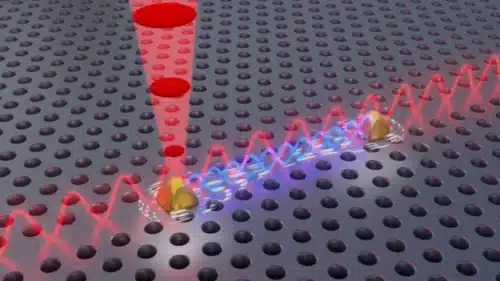Researchers at the University of Copenhagen and Ruhr University have achieved control over multiple quantum light sources, paving the way for commercial applications and quantum computing.

Over the years, scientists worldwide have dedicated their efforts to create reliable sources of quantum light and attained the remarkable phenomenon known as quantum mechanical entanglement. This phenomenon, reminiscent of science fiction, enables two light sources to influence each other, even over vast distances, instantly. Entanglement forms the foundation of quantum networks and plays a crucial role in advancing the efficiency of quantum computers.
Researchers at the University of Copenhagen and Ruhr University Bochum have developed a way to control two quantum light sources rather than one. This significant progress paves the way for new opportunities in commercial applications, allowing companies and other stakeholders to harness the potential of this technology.
Quantum sources overtake the world’s most powerful computer
The intricate nature of light sources makes them highly susceptible to external disturbances or “noise,” posing significant challenges for replication. However, in a groundbreaking achievement, the research team has triumphed in generating not just one but two identical quantum light sources. This remarkable outcome marks a significant advancement, overcoming the hurdles of maintaining precise control over such delicate systems. Quantum bits being both 1 and 0 simultaneously yields unprecedented processing power. One hundred photons from one quantum light source surpass the world’s largest supercomputer. With 20-30 entangled sources, there is the potential to build a universal error-corrected quantum computer
Other actors will build upon the research
The researchers highlight the challenge of transitioning from one to two quantum light sources. It demands silent nanochip development and meticulous control over each source. The researcher establishes the foundation for quantum physics research. Now, it’s up to other stakeholders to leverage it for advancing technologies like computers, the internet, and encryption.
Building a setup to control 15-20 quantum light sources is cost-prohibitive for universities. Having contributed to understanding fundamental quantum physics and taking the initial step, further scaling up is primarily a technological challenge.
Reference: Materials provided above by University of Copenhagen – Faculty of Science.






